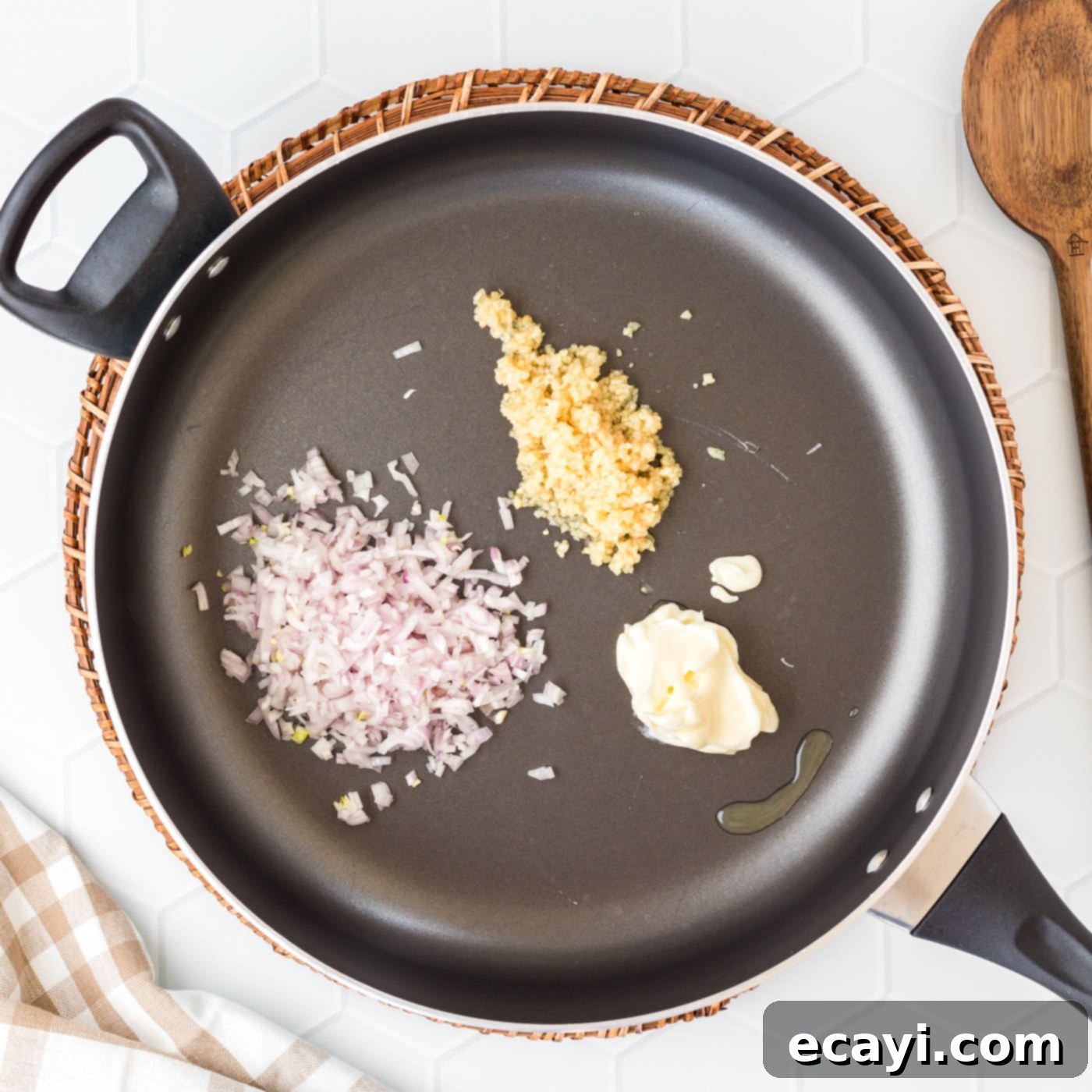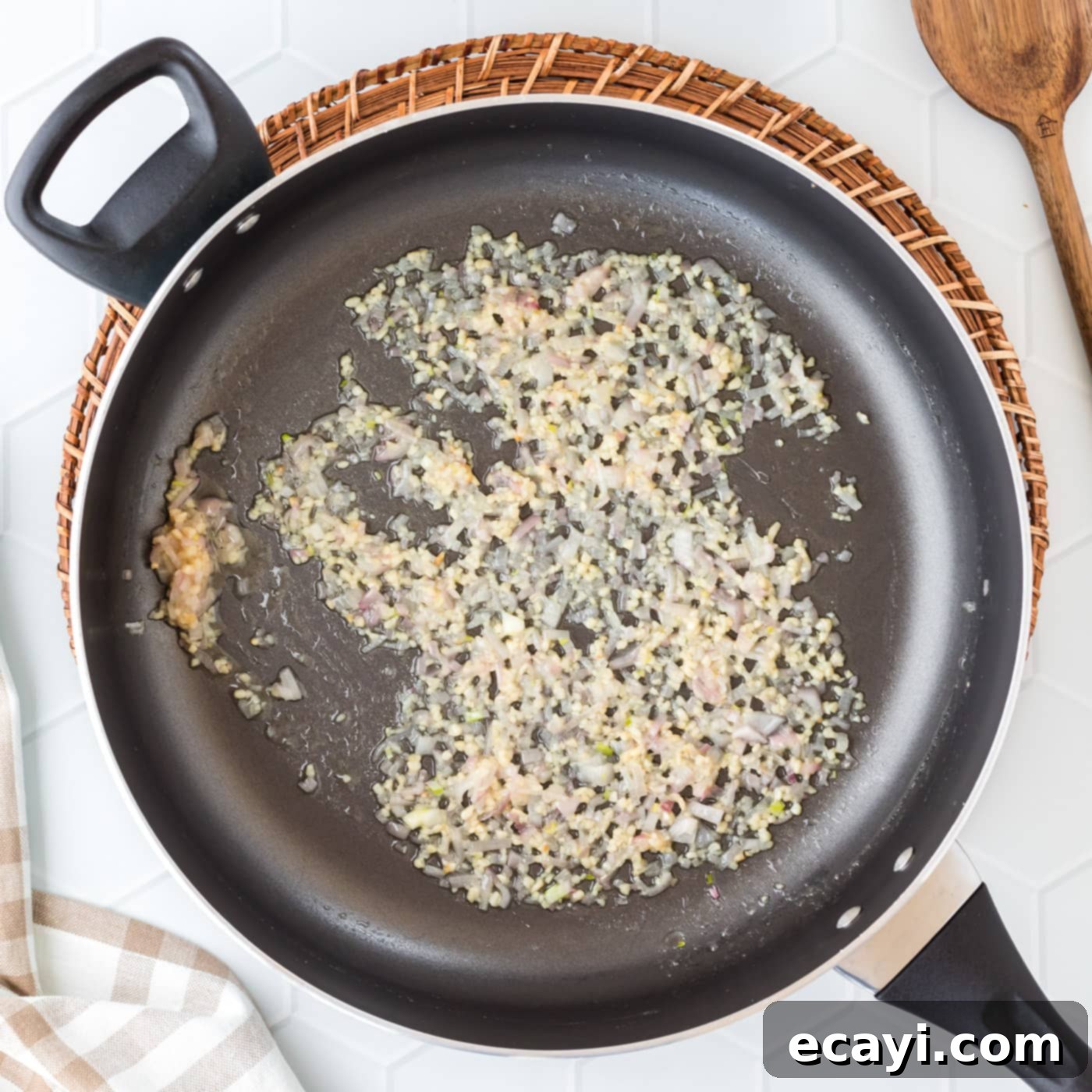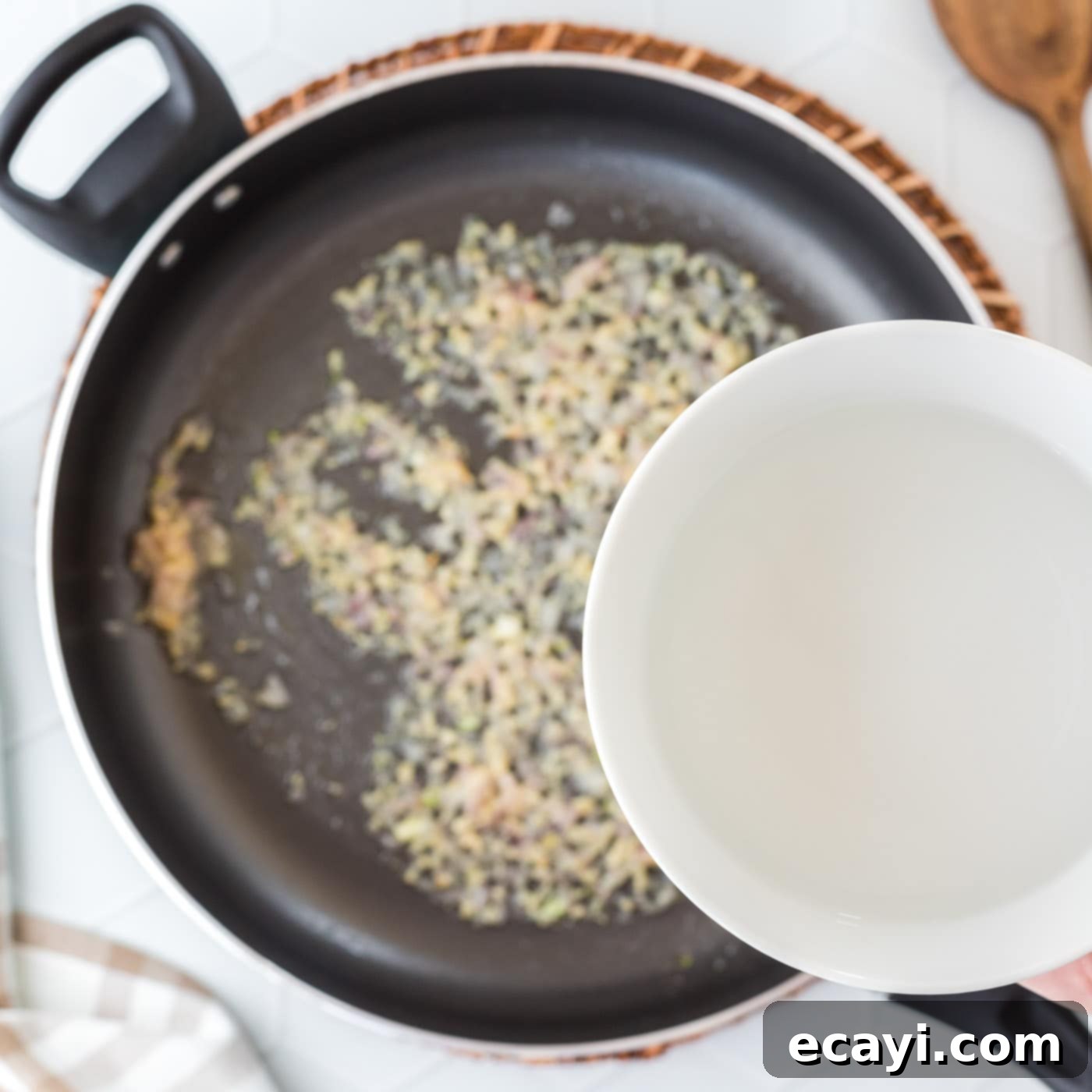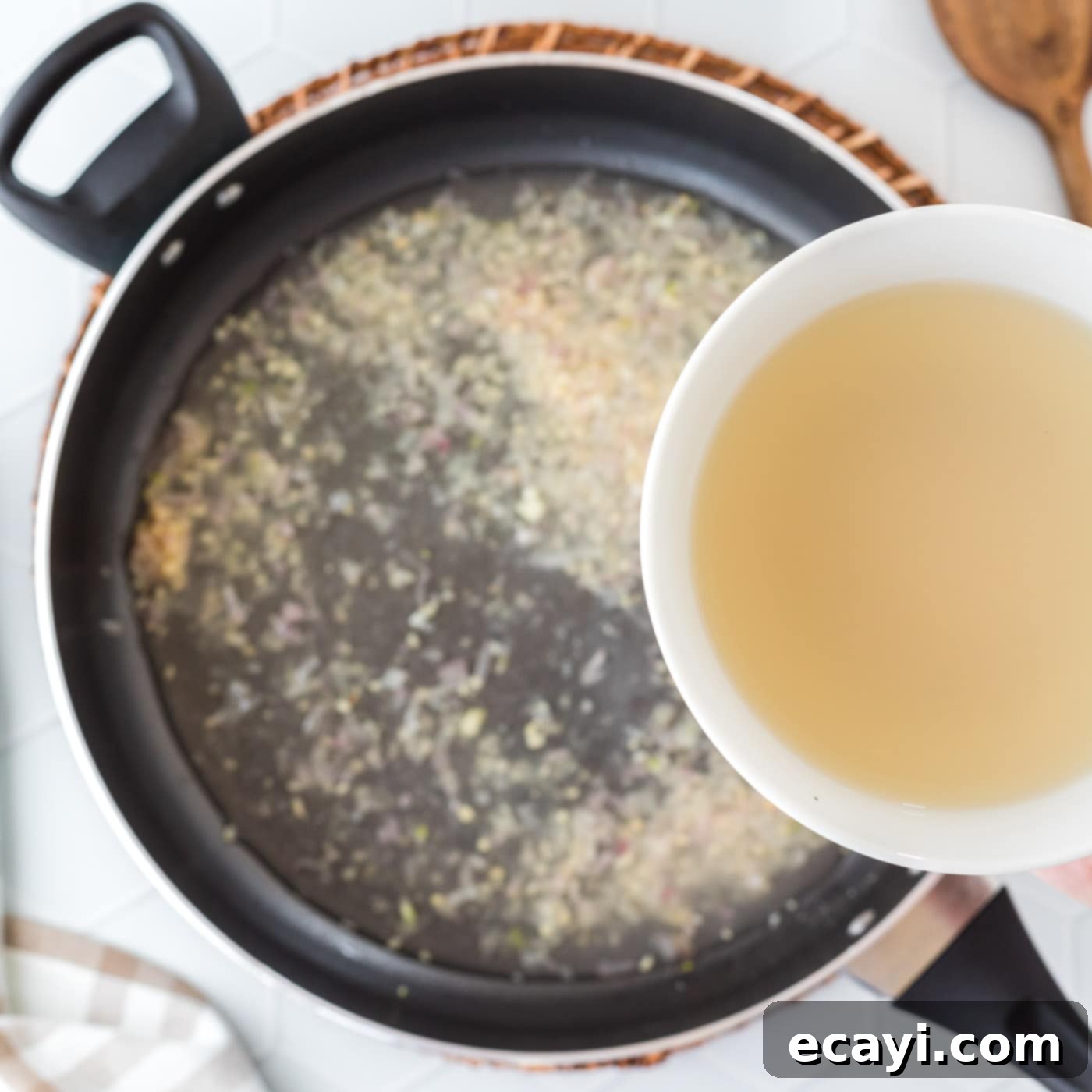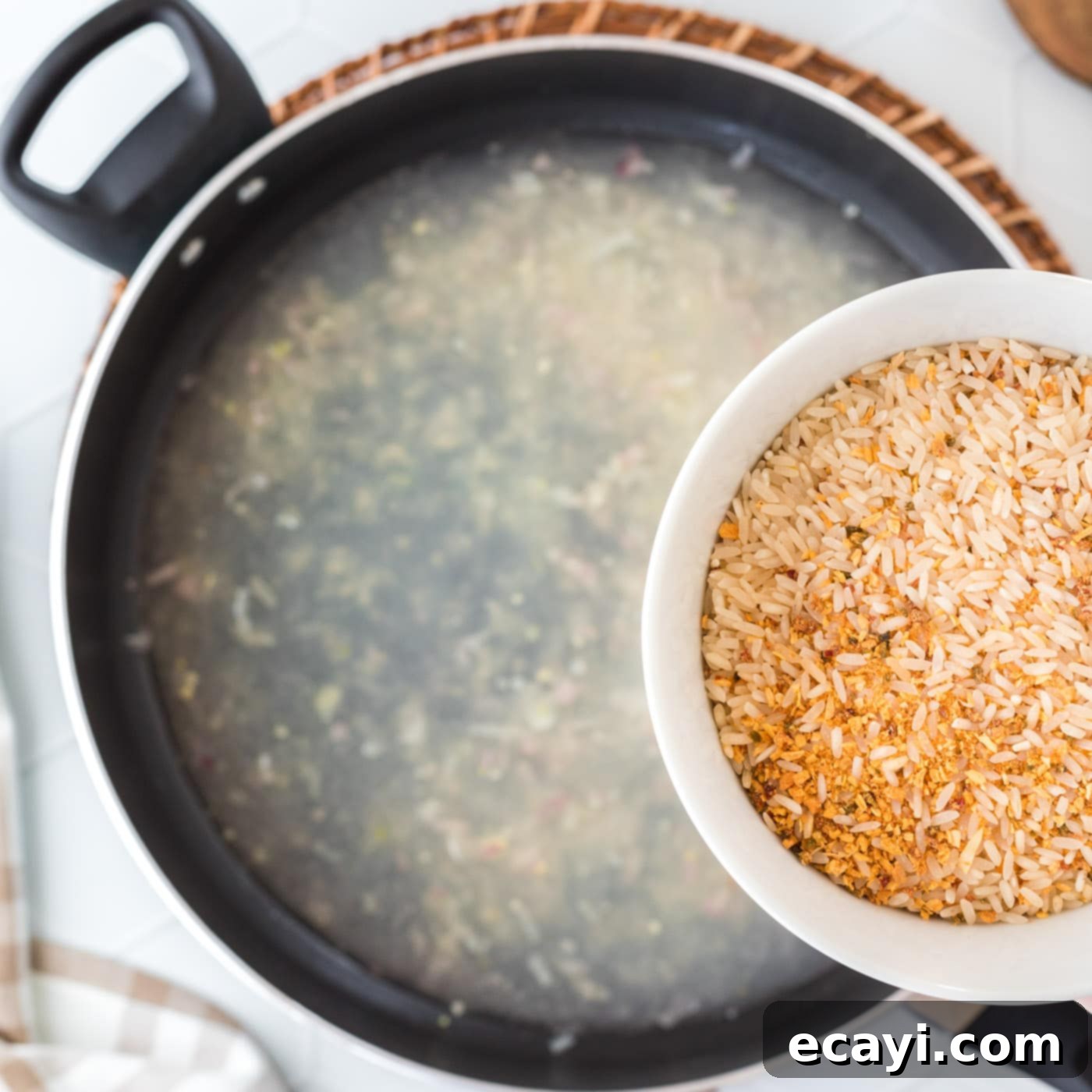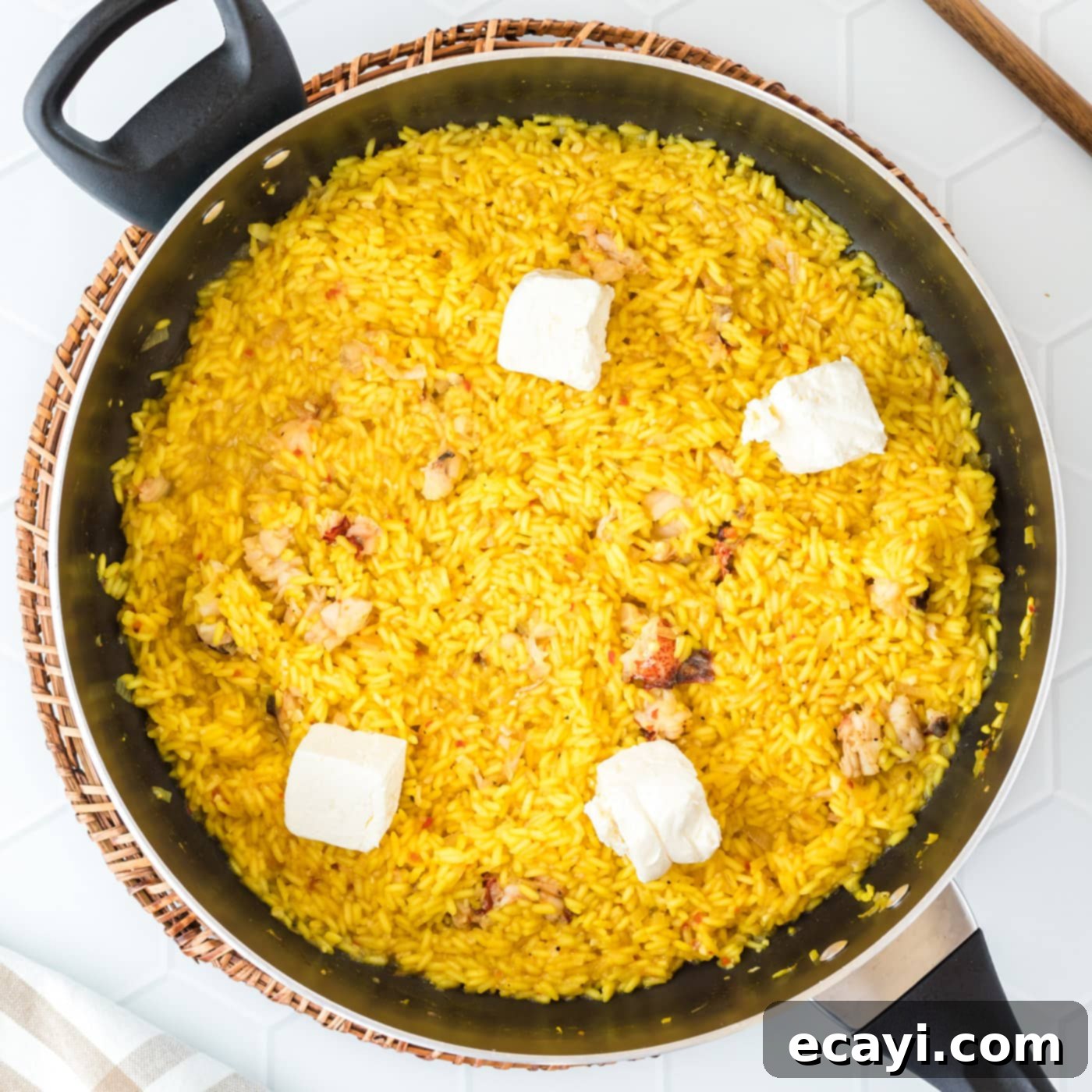Indulge in Luxury: The Ultimate Creamy Lobster Risotto Recipe
Prepare to impress with this exquisite lobster risotto recipe, a dish that effortlessly combines elegance with incredible flavor. Featuring succulent, tender chunks of fresh lobster meat nestled in a rich, velvety, and perfectly creamy risotto, this dish promises a gourmet experience right in your home kitchen. It’s an ideal choice for celebrating special moments or simply elevating a weeknight meal into something truly extraordinary.

Why This Recipe Is a Must-Try
Lobster risotto has a reputation as a sophisticated and often intimidating dish, typically reserved for high-end restaurants or special celebrations like Valentine’s Day, anniversaries, or elegant dinner parties. However, this recipe breaks down the complexity, allowing you to recreate that luxurious experience in your own kitchen with surprising ease. It’s a truly rich and hearty seafood risotto, generously studded with tender, freshly steamed lobster tail meat that offers an unparalleled burst of ocean-fresh flavor with every spoonful.
What sets this recipe apart, beyond its incredible taste, is the option for a stunning presentation. We guide you through the process of “crowning” the lobster tails and then serving the finished risotto directly inside the cleaned lobster shells. This unique plating technique isn’t just visually captivating; it transforms the meal into an unforgettable dining experience, guaranteed to “wow” your guests and make any occasion feel truly special. The creamy texture of the saffron-infused rice, combined with the sweet, delicate lobster, creates a harmonious symphony of flavors that is both comforting and incredibly decadent. Plus, our clear, step-by-step instructions ensure that even a novice cook can achieve a restaurant-quality result.

Essential Ingredients for Your Lobster Risotto
Before you begin, ensure you have all your ingredients measured and ready. You can find a complete list of quantities and detailed instructions in the printable recipe card located towards the end of this post.
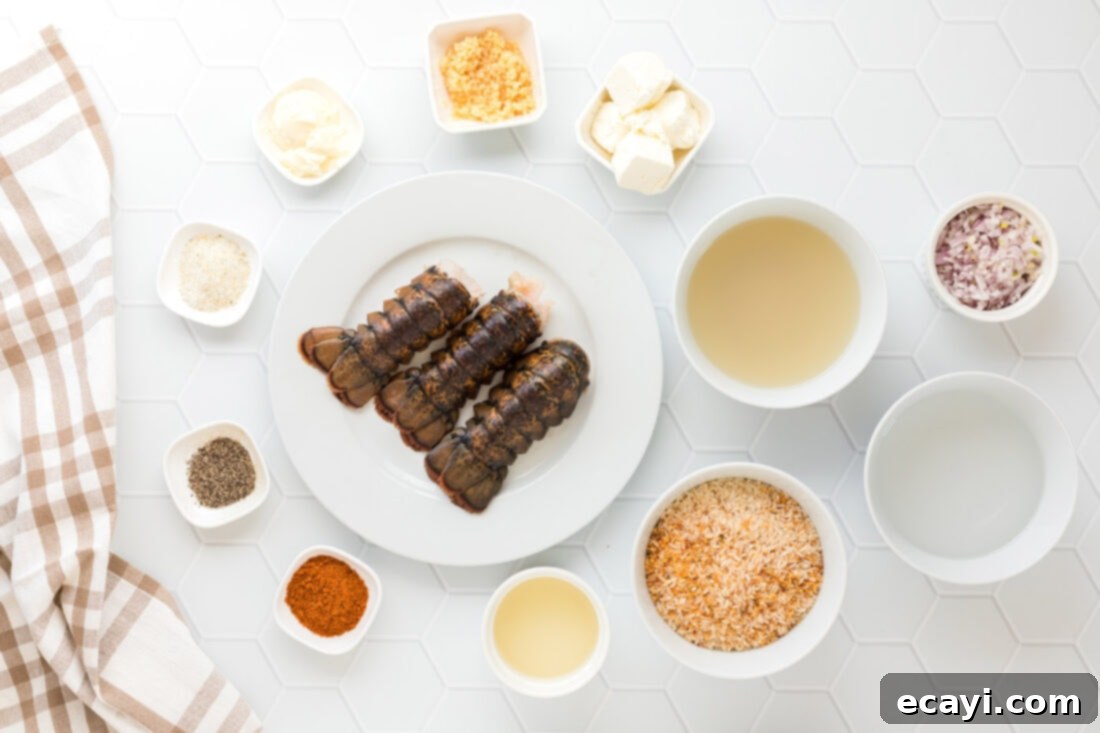
Ingredient Spotlight & Expert Substitution Tips
Understanding your ingredients is key to achieving the best flavor and texture in your lobster risotto. Here’s a closer look at the stars of this dish and how to handle them:
LOBSTER: For this recipe, we focus on lobster tails, known for their sweet and tender meat. If you desire a more substantial lobster presence in your risotto, feel free to increase the number of tails used. When preparing your lobster, it’s crucial to ensure proper thawing. Always defrost frozen lobster tails overnight in the refrigerator; avoid purchasing pre-thawed tails from the store, as their quality can degrade quickly. Once thawed, carefully inspect the flesh for a dark line, which is the digestive tract. This should be gently removed before cooking for a cleaner taste. Handling lobster with gloved hands can be helpful for hygiene and grip during preparation. While tails are excellent, you could also incorporate claw and knuckle meat if you’re preparing a whole lobster, adding even more textural variety.
RICE: The foundation of any great risotto is the right type of rice. Traditionally, Arborio or Carnaroli rice is used for its high starch content, which releases during cooking to create that signature creamy texture. This recipe offers a clever alternative: yellow saffron rice. True saffron is one of the world’s most expensive spices, often difficult to source and quite pricey. Yellow saffron rice, readily available in the rice aisle of most grocery stores, provides a beautiful golden hue and a subtle, aromatic flavor profile reminiscent of saffron without the extravagant cost or effort of infusing real saffron threads. If you prefer the authentic route, you can use Arborio rice and add a pinch of saffron threads steeped in a little warm water or broth during the cooking process. The key to perfect risotto is patient, gradual addition of liquid and consistent stirring to encourage starch release.
CREAM CHEESE: This ingredient is vital for imparting a luxurious, smooth, and incredibly creamy texture to your risotto, making it truly decadent. Cream cheese melts beautifully, blending seamlessly into the rice and binding all the flavors together. For an even richer, more authentic Italian touch, you can substitute the cream cheese with mascarpone cheese. Mascarpone is an Italian cream cheese, known for its higher fat content and milder, slightly sweet flavor, which would complement the lobster wonderfully. Either option will contribute to the desired lusciousness of the dish.
OTHER AROMATICS & LIQUIDS:
* Garlic and Shallots: These aromatics form the fragrant base of the risotto, providing a delicate yet savory depth of flavor. Mincing them finely ensures they soften and meld into the dish without being overpowering.
* Unsalted Butter: Used for sautéing, butter adds richness and helps to carry the flavors of the garlic and shallots.
* Clam Juice: This is a secret weapon for boosting the seafood essence of the risotto. It provides a savory, briny base that perfectly complements the lobster and deepens the overall umami. If clam juice is unavailable, a high-quality seafood broth can be used, though clam juice offers a more distinct flavor.
* Lemon Juice: A squeeze of fresh lemon juice at the end brightens the entire dish, cutting through the richness and enhancing the natural sweetness of the lobster. It’s a small addition that makes a big difference.
Crafting Your Lobster Risotto: Step-by-Step Guide
These step-by-step photos and detailed instructions are here to help you visualize each stage of making this exquisite recipe. For a convenient printable version of this recipe, complete with precise measurements and comprehensive instructions, please Jump to Recipe at the bottom of this page.
Preparing the Lobster Tails
- Begin by thoroughly rinsing your lobster tails under cold running water and then patting them completely dry with paper towels. This ensures clean, unadulterated flavor.
- Wearing gloves for better grip and protection, take kitchen shears and carefully cut down the middle of the top shell of each lobster tail. Stop your cut just before the very last hump of the shell, right before the tail fin. This creates a neat opening for the crowning technique.
- Gently turn the tail over. From the head end, carefully loosen the meat from the shell using your thumbs. Lift the meat upwards, pulling it out of the shell but leaving it still attached at the tail fin. This intricate step prepares the lobster for its “crowned” presentation.
- Once the meat is lifted, gently push the empty shell halves back together underneath the meat, almost as if you’re closing them. Rest the lifted lobster meat elegantly on top of the closed shell. This is known as “crowning” and creates a beautiful, elevated presentation.
- Season the exposed lobster meat generously with Old Bay seasoning. This classic seafood seasoning adds a wonderful blend of spices that complements the sweet lobster meat beautifully.
- Carefully place the crowned lobster tails into the top section of your steam pot. Ensure they are arranged in a single layer for even cooking.
- Pour water into the bottom section of the steam pot and bring it to a rolling boil over high heat on your stovetop.
- Once the water is boiling, place the top section of the steam pot, containing the lobster tails, over the bottom section. Reduce the heat to low, cover the pot tightly, and allow the lobster to steam for 8-10 minutes. Steaming ensures the lobster cooks gently and remains tender.
- After steaming, carefully remove the cooked lobster meat from the tails. Dice the meat into bite-sized pieces, perfect for stirring into the risotto. Set aside.
Making the Creamy Saffron Risotto
- In a large, heavy-bottomed skillet or Dutch oven, melt the unsalted butter over medium heat. Add the minced garlic and shallots. Sauté these aromatics, stirring occasionally, until they become tender and fragrant, typically 3-5 minutes. Be careful not to brown them.


- Pour in the water and clam juice. Increase the heat to medium-high and bring the liquid to a gentle boil. This flavorful liquid will be absorbed by the rice, forming the heart of your risotto.


- Add the yellow saffron rice to the skillet. Give it a good stir to ensure all grains are coated. Reduce the heat to low, cover the skillet, and allow the rice to cook for 20-25 minutes. Remember to stir occasionally to prevent sticking and promote even absorption. The rice should still retain a slight firmness, an “al dente” bite, as it will continue to soften slightly after cooking.

- Once most of the liquid has been absorbed and the rice is nearly cooked, add the cubed cream cheese and fresh lemon juice to the skillet. Stir continuously until the cream cheese completely melts and integrates, creating a wonderfully creamy and smooth texture.

- Gently fold in the chopped cooked lobster meat. Stir just enough to incorporate it and heat it through, which should take approximately 2-3 minutes. Avoid over-stirring to keep the lobster pieces intact.
- Remove the skillet from the heat, cover it, and allow the risotto to rest for 3-5 minutes. This final rest allows the flavors to meld and the risotto to reach its perfect consistency. For an exquisite presentation, you can optionally spoon the hot risotto back into the cleaned lobster tail shells before serving.
Frequently Asked Questions & Expert Tips for Perfection
While lobster risotto is undoubtedly at its best when served immediately, any leftovers can be stored. Transfer the cooled risotto to an airtight container and refrigerate it for up to 3 days. When reheating, gently warm it on the stovetop over low heat, adding a splash of chicken broth or water to restore its creamy consistency, as risotto tends to thicken significantly in the fridge. Avoid microwaving if possible, as it can make the rice gummy and dry out the lobster.
It is strongly recommended to defrost lobster tails before cooking. Defrosting them overnight in the refrigerator ensures even cooking and helps maintain the tender texture of the meat. Cooking from frozen can lead to rubbery lobster and an inconsistent result in your risotto.
Achieving the perfect creamy texture in risotto is all about the starch release from the rice. If your risotto isn’t creamy enough, it might be due to insufficient stirring or not using a high-starch rice (like Arborio or the saffron rice suggested). Remember to stir occasionally during the rice cooking phase to help release starches. Adding cream cheese or mascarpone at the end significantly boosts creaminess, so ensure it’s fully melted and incorporated.
You can steam and chop the lobster meat a few hours ahead and keep it refrigerated. The aromatics (garlic and shallots) can also be minced in advance. However, for the best results, risotto should be cooked fresh just before serving. The rice continues to absorb liquid and can become mushy if left sitting for too long after cooking.
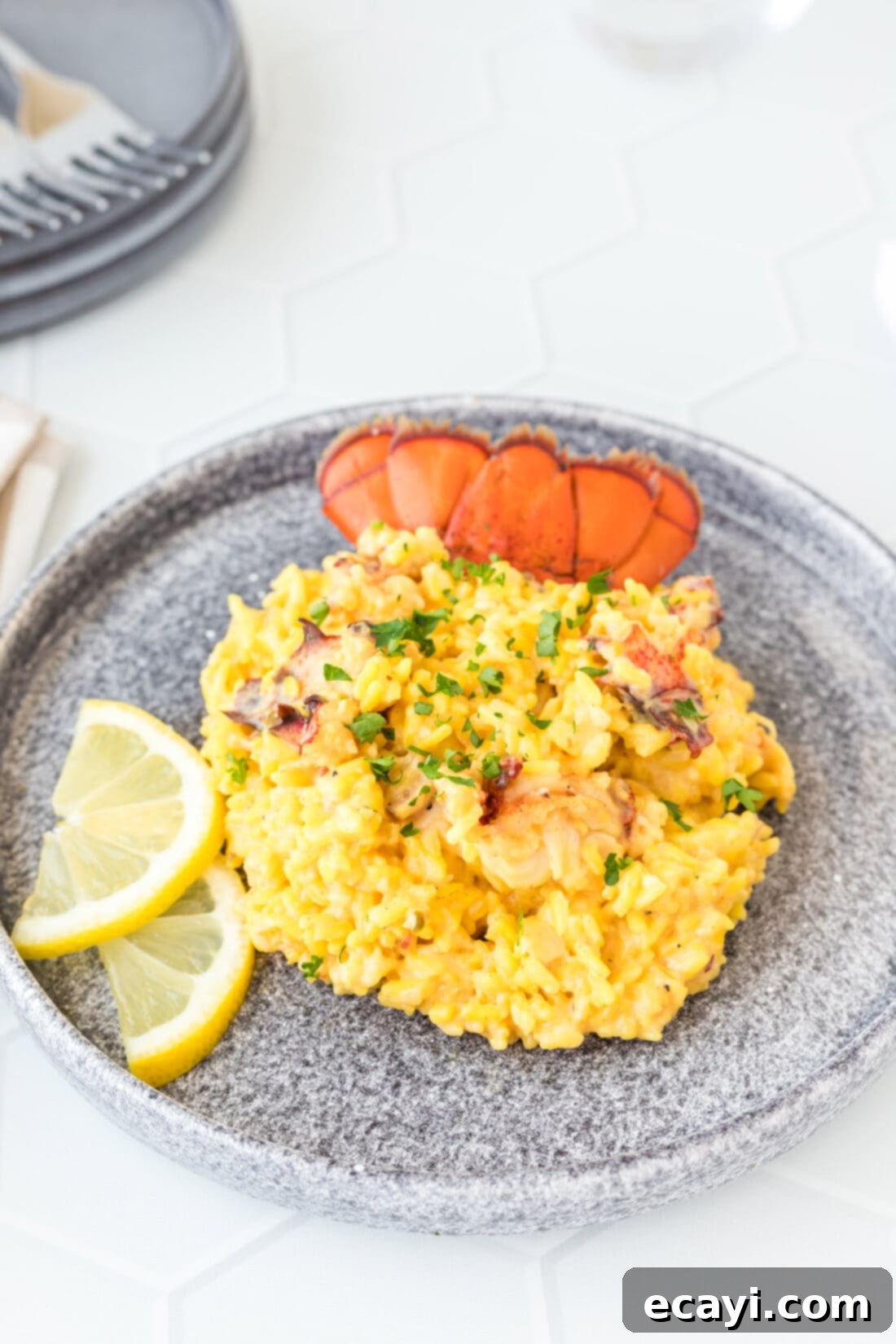
Elevate Your Meal: Perfect Serving Suggestions
This luxurious lobster risotto can stand proudly as the star of your meal. For a complete and balanced dining experience, consider serving it alongside a crisp, leafy green salad with a light vinaigrette to provide a refreshing contrast to the richness of the risotto. Fresh asparagus spears, simply steamed or roasted, or tender green beans also make excellent accompaniments; they can be served on the side or even gently folded into the risotto during the final stages of cooking for added color and vegetable goodness. To truly enhance the gourmet feel, pair your lobster risotto with a perfectly chilled, dry white wine. We highly recommend a Chardonnay for its buttery notes that complement the lobster, or a crisp Sauvignon Blanc for a brighter, more acidic counterpoint. A delicate garnish of fresh parsley or chives adds a final touch of freshness and visual appeal.
More Delectable Seafood Recipes to Explore
If you love the flavors of the ocean, be sure to check out these other fantastic seafood dishes:
- Irresistible Crab Cakes
- Classic Lobster Roll
- Perfectly Baked Salmon
- Flavorful Blackened Shrimp
- Sweet and Savory Honey Walnut Shrimp
- Delicious Dungeness Crab Legs
- Exquisite Pan Seared Scallops
- Creamy Lobster Bisque
I love to bake and cook and share my kitchen experience with all of you! Remembering to come back each day can be tough, that’s why I offer a convenient newsletter every time a new recipe posts. Simply subscribe and start receiving your free daily recipes!

Lobster Risotto
IMPORTANT – There are often Frequently Asked Questions within the blog post that you may find helpful. Simply scroll back up to read them!
Print It
Pin It
Rate It
Save ItSaved!
Ingredients
- 9 ounce lobster tails (approximately 3 – 3 ounce tails)
- Old Bay seasoning (to taste)
- 1 Tablespoon minced garlic
- ½ cup minced shallots (about 1 large shallot)
- 1 ½ Tablespoons unsalted butter
- 1 ½ cups water
- 1 ½ cups clam juice
- 10 ounces yellow saffron rice
- 3 ounces cream cheese (cubed, or mascarpone for substitution)
- 2 Tablespoons lemon juice
Kitchen Tools You’ll Need
-
Large skillet
-
Steam pot (with steamer insert)
-
Vinyl gloves (optional, for handling lobster)
-
Kitchen shears
Chef’s Notes & Pro Tips
- For an even more robust lobster flavor throughout the risotto, consider making a quick lobster broth from any discarded shells. Simmer shells with a few vegetables (onion, celery) and water for 20-30 minutes, then strain and use in place of part of the clam juice/water.
- If you opt for more lobster tails, remember to adjust the Old Bay seasoning accordingly to ensure even flavor.
- The beauty of risotto lies in its texture. Do not rush the cooking process, especially the rice absorption phase. Stirring occasionally is important to release the starches and create creaminess, but you don’t need to stir constantly like traditional Arborio risotto.
- For a vibrant presentation, garnish with fresh chopped parsley or chives just before serving.
Instructions
To Cook the Lobster
-
Rinse and gently pat dry the lobster tails to ensure optimal cooking and seasoning adherence.
-
Using kitchen shears, carefully cut down the middle of the top shell of each lobster tail, stopping just before the last segment of the tail fin. This allows for the crowning technique.
-
Flip the tail over. Gently loosen the lobster meat from the shell near the head end, then lift it out, ensuring it remains connected at the tail fin for the elegant “crowned” presentation.
-
Lift the meat and gently close the tail shell halves underneath it, resting the meat on top of the closed shell. This beautiful presentation is referred to as crowning. Season the exposed meat generously with Old Bay seasoning.
-
Carefully place the crowned lobster tails into the top insert of your steam pot.
-
Bring water to a vigorous boil in the bottom section of your steam pot.
-
Position the top steamer insert (with lobster) over the boiling water in the bottom pot. Reduce heat to low, cover the pot tightly, and steam the lobster for 8-10 minutes until opaque and cooked through.
-
Once cooked, carefully remove the meat from the tails and chop it into uniform bite-sized pieces. Set aside.
To Make the Risotto
-
In a large, sturdy skillet, melt the unsalted butter over medium heat. Add the minced garlic and shallots, sautéing until they are tender and aromatic, typically for 3-5 minutes. Avoid browning for best flavor.
-
Pour in the water and clam juice. Increase the heat to medium-high and bring this flavorful liquid mixture to a gentle boil.
-
Add the yellow saffron rice to the skillet, stirring to ensure it’s evenly distributed. Reduce the heat to low, cover the skillet, and cook for 20-25 minutes, stirring occasionally. The rice should absorb most of the liquid and still have a slight “al dente” bite.
-
Once the liquid is mostly absorbed, add the cubed cream cheese (or mascarpone) and fresh lemon juice. Stir continuously until the cheese is completely melted and smoothly incorporated, creating a rich, creamy consistency.
-
Gently stir in the chopped lobster meat. Continue stirring for only 2-3 minutes, just enough to heat the lobster through without overcooking it.
-
Turn off the heat, cover the skillet, and allow the risotto to rest for 3-5 minutes. This allows the flavors to meld and the risotto to reach its ideal creaminess. Optionally, for a truly impressive presentation, carefully spoon the finished risotto back into the cleaned lobster tail shells and serve immediately.
Nutrition Information
The recipes on this blog are tested with a conventional gas oven and gas stovetop. It’s important to note that some ovens, especially as they age, can cook and bake inconsistently. Using an inexpensive oven thermometer can assure you that your oven is truly heating to the proper temperature. If you use a toaster oven or countertop oven, please keep in mind that they may not distribute heat the same as a conventional full sized oven and you may need to adjust your cooking/baking times. In the case of recipes made with a pressure cooker, air fryer, slow cooker, or other appliance, a link to the appliances we use is listed within each respective recipe. For baking recipes where measurements are given by weight, please note that results may not be the same if cups are used instead, and we can’t guarantee success with that method.

